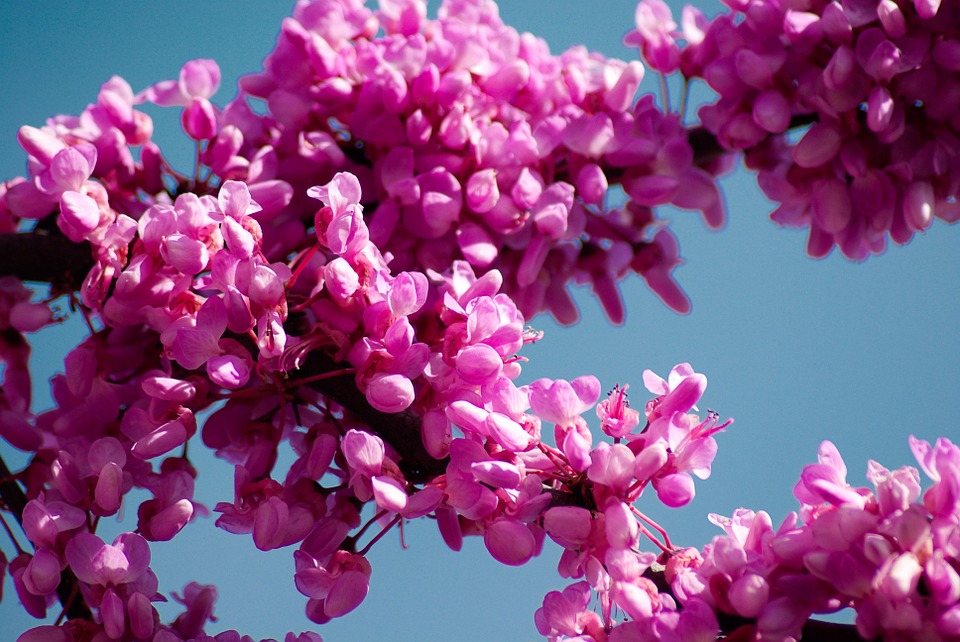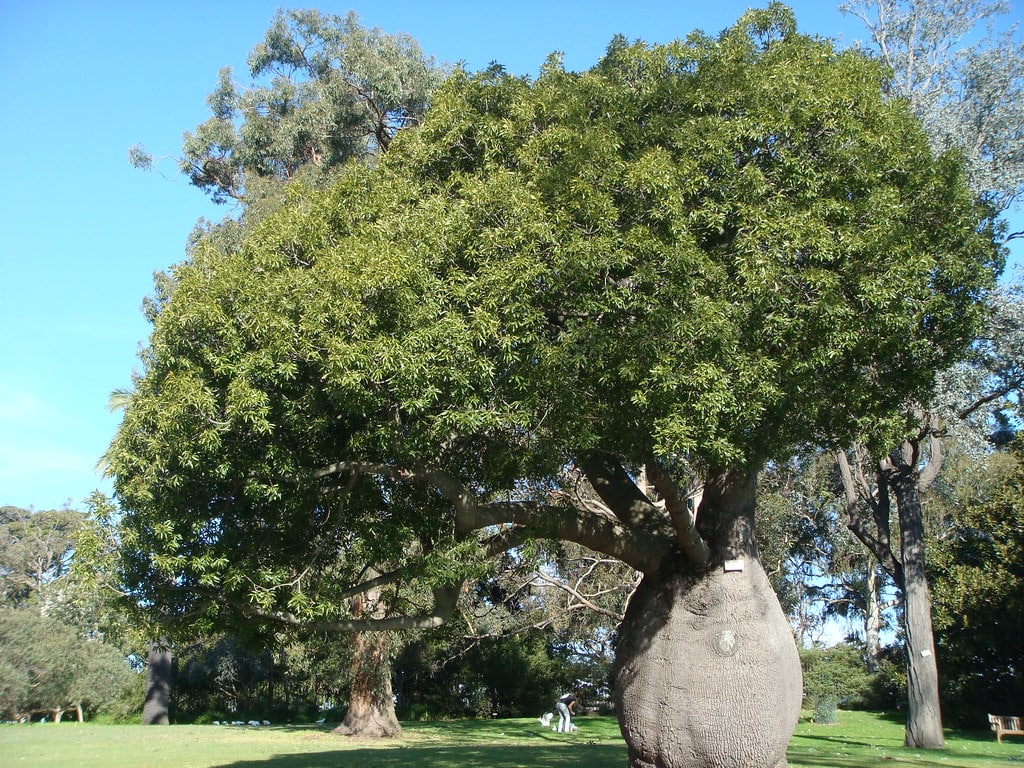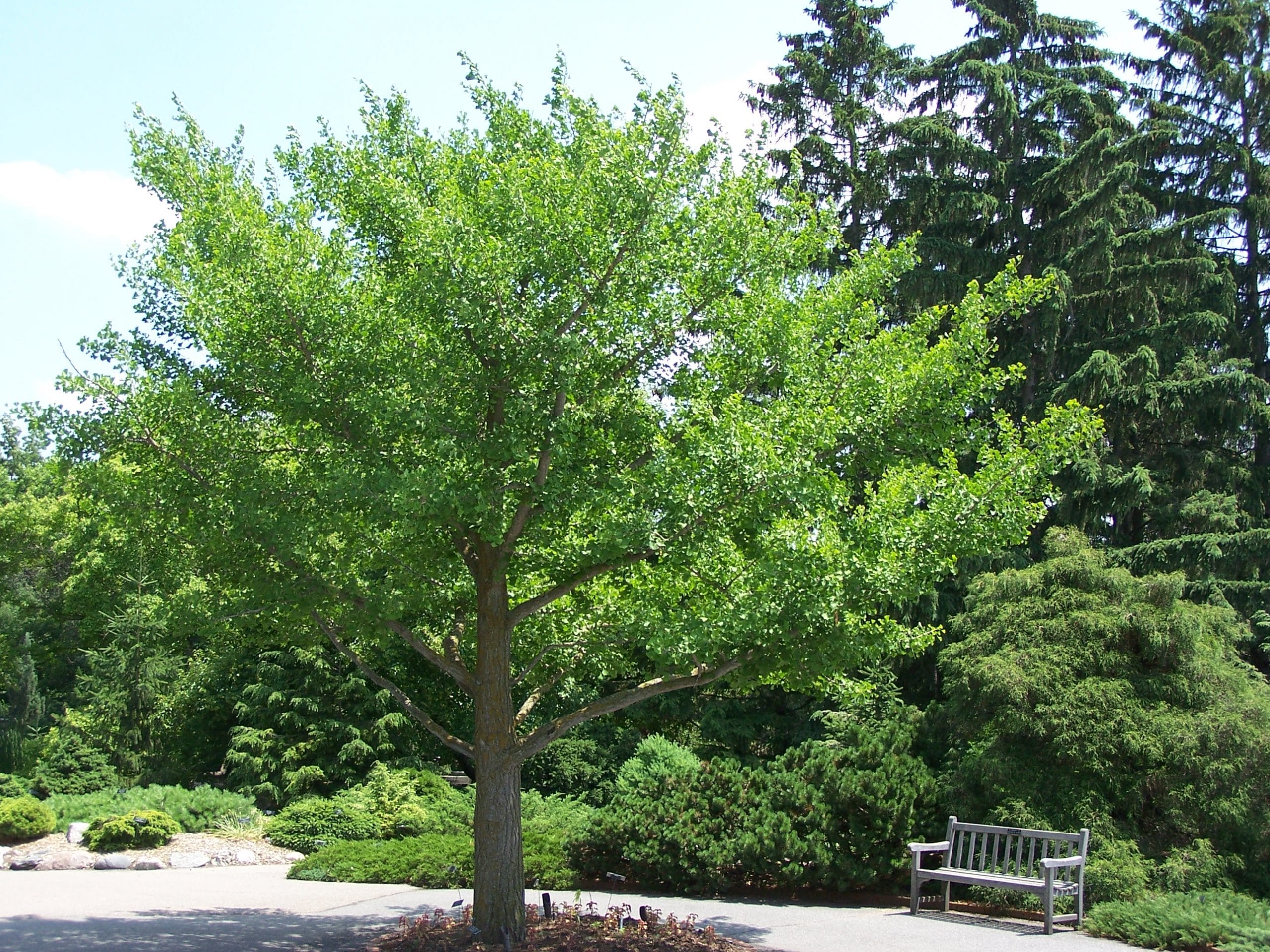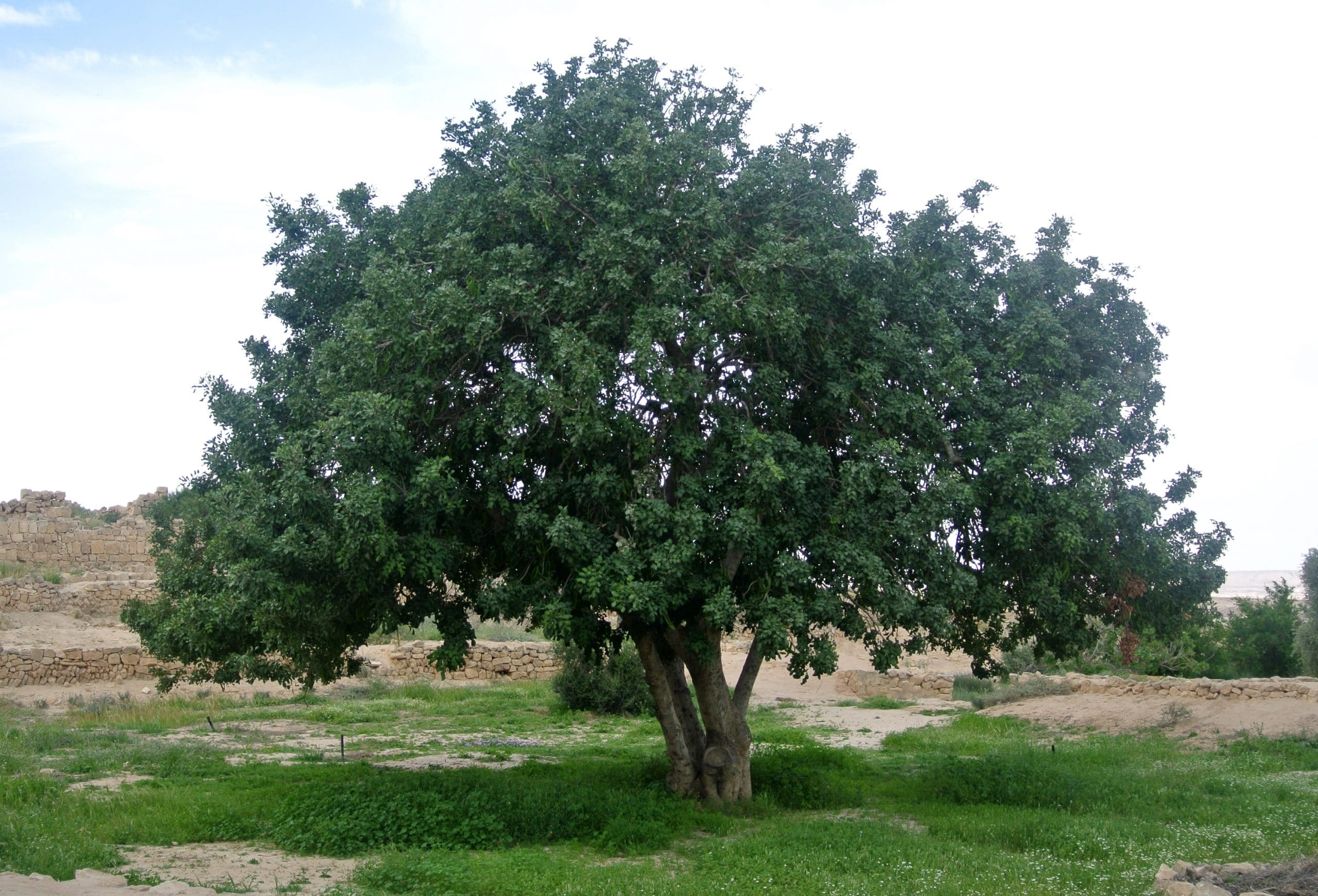
flowers of the Cercis siliquastrum , a tree that requires regular watering.
Trees are plants that usually receive either much more water than they need, or on the contrary less. And the truth is that the issue of irrigation is one of the most complicated to control, especially if the specimens are in the ground, because in these conditions it is almost impossible to know with absolute certainty if the roots are sufficiently hydrated or not.
Therefore, this time I ask you the following question: Do you know when and how to water trees? If you don't know the answer, or if you have doubts, don't worry, I'll solve it for you below 🙂 .
Not all trees need the same amount of water

Brachychiton rupestris, a tree very resistant to drought. // Image sourced from Flickr/Louisa Billeter
And this is the first thing to know. Fortunately, we live on a planet where there is diversity of climates, diversity of soils and habitats, which means that there is a significant number of tree species that live in areas with disparate conditions: some live in areas where the rain is so scarce and the sun is so strong that the land dries up quickly; others, however, have adapted to live in places where the rains are very abundant and the temperature is always warm;... and in between these two extremes, there are many other scenarios or habitats.
For this reason, when we go to buy a tree for the garden or to grow it in a pot, we must find out where it originates from, because the care he has been receiving up to that moment is not always adequate. To give you an idea of what I'm saying, let's talk about Brachychiton populneus, an evergreen tree native to rather dry Australia, and from the Persea americana (avocado), an evergreen tree that lives in central and eastern Mexico and Guatemala.
While the first is very resistant to drought (I have two in the garden and I never water them, and they fall about 350mm a year), the avocado does need to be watered very often, since in its natural habitat it falls between 800 and 2000 mm each year.
So when and how to water trees?

El Ginkgo biloba It is a tree that needs frequent watering. // Image sourced from Wikimedia/SEWilco
Potted trees
If you grow trees in pots, it really won't be very difficult to control the watering; not in vain, you just have to pour water until you see it come out of the drainage holes, leaving the substrate soaked. In the event that you see that the precious liquid goes to the sides, that is, between what is the substrate and the pot, you should place said pot in a basin with water, since that happens because the earth is so dry it becomes a »block».
The frequency of watering will vary a lot depending on the season you are in, so I always like to advise the same: check the humidity of the soil, for example by weighing the pot once watered and again after a few days. , or with the classic stick, which will come out with a lot of soil attached if it is still wet.
Trees in the garden
If what you have are trees planted in the garden, things get complicated. How do you know when to water them? And how much water do you need to add? Well, it depends on the size of them. And it is that if you have ever read or heard that the surface that its root system occupies more or less coincides with the size of its crown... it is not true, but it is a fact that can help you.
To better understand this topic and avoid problems, you should know that, broadly speaking, there are two types of tree roots: one is the pivoting one, which is the thickest of all and the one that serves as an anchor, and other finer ones that are the so-called secondary roots and that fulfill the function of searching and absorbing water. The pivoting one grows downwards, but it usually stays in the first 60-70cm inland, the others, on the other hand, do grow a lot (a lot, in the case of trees such as Ficus or Fraxinus, which can reach ten meters long or even more).
Thus, when we water we have to pour plenty of water, so that we get it to reach all the roots. In general, if the plants are two meters tall, ten liters can be enough; On the other hand, if they measure four meters or more, ten liters, it is normal for them to taste little 🙂 .
With all this in mind, we can check the soil moisture with digital moisture meters, which when introduced into the soil will tell us how wet it is, or a method that I personally like more because I find it more reliable is that of dig about four inches next to the plant. It may not seem like much, but if at that depth we see that the earth is very humid, we can get an idea that if we went deeper we would continue to find humid earth, because it is difficult for the sun's rays to reach further down.

La Ceratonia siliqua lives well with little water.
In any case, if you have any doubts, do not leave them in the inkwell.
Hello Monica.
Super interesting comment.
I find it very useful, we always have doubts and we water almost everyone equally (the truth is that almost all our trees are from a temperate climate and deciduous). It is good to have several ways to determine soil moisture. The photos are amazing. The Brachychiton rupestris is amazing!
Thank you very much as always!
GALANTE NACHO
Yes, it is a bit difficult to control the irrigation, especially when you have the plants in the ground. But with time and experience it gets better.
Regarding B. rupestris, it is a wonderful tree. I like to call it the Australian baobab, because of its bottle-shaped trunk and its resistance to drought. I've had one in the ground for a couple of years now and I think I've only watered it about five or six times. And there it continues, growing.
Of course it grows more when it is watered more often, but if you live in an area where it rains little and you are looking for a low or no maintenance garden, it is undoubtedly a species to take into account.
Regards!
I live in Tenerife, in a warm climate, not far from the coast. The community garden, with already large trees, planted many years ago, are various ficuses, palm trees, false pepper trees, apart from other smaller species, such as acaliphas-type shrubs. We have planted a lot of agave and succulent plants, all to save water until automatic irrigation can be put in. The garden looks lush and green, but each neighbor has different opinions regarding watering it. With a rather dry climate, the gardener waters one week yes, the other no. Today a neighbor complained because he saw the boy watering a big tree, saying that they don't need watering... Can someone clarify this for me? Thank you
Hello rosa.
All trees and plants need water, but for example if it rains a lot today, falling a minimum of 20 liters, then you don't have to water until a few days have passed in summer, or even weeks in winter.
The frequency of watering will also depend on the plant and how long it has been in the ground. In general, you have to wait at least a year before starting to space out the waterings, and it will only be done if that particular plant is capable of living well in that place on its own.
For example, a Jacaranda lives well in warm and temperate climates, but since it does not rain regularly every few days it will not survive on its own.
So, what I want to tell you is that it depends on the tree that has been watered and how long it has been in the garden.
Still, if it's been more than a week or two without rain and temperatures are 20-30 degrees Celsius, that water won't hurt.
If you have more questions, ask 🙂
Regards!
Thanks a lot! It's clear for me. Greetings from Tenerife!
Great, thanks to you. Greetings!
HELLO, GOOD AFTERNOON, I WOULD LIKE TO ASK YOUR OPINION ABOUT IRRIGATION OF TREES IN DEPTH. IT IS A SYSTEM THAT SEND WATER THROUGH A PIPE ONE METER DEEP NEAR THE TRUNK, CREATING A BULB OF HUMIDITY THERE.
THE FREQUENCY WILL DEPEND ON THE CLIMATE AND THE SPECIES, BUT THE FINAL OBJECTIVE IS TO AVOID THE DEVELOPMENT OF ROOTS ON THE SURFACE. DO YOU THINK THE METHOD IS SUCCESSFUL?
THANK YOU
Hello Raul.
It does not seem like a bad system, but there are many things that have to be taken into account. For example, the vast majority of trees do not like to have puddled water in their roots, as it could cause them to suffocate... unless the soil was able to quickly absorb and filter that water.
On the other hand, not all climates or terrains are the same, and it is difficult to know for sure how often to water, and how much. If it is a deep irrigation, how do you know when the soil has already absorbed all the water?
I do not know. It raises a few questions for me. It could be very interesting, especially for those who do not want to cut down trees whose roots could cause future problems if they do not take action beforehand. But you have to know very well the characteristics and conditions in which that tree lives, and what its needs are.
Regards!
Hello, I wanted to ask you about two trees that I have, a lemon tree in a pot about two meters high and a mandarin tree in a tree about three meters, this one older. I am from Seville and these days with heat of more than forty. I usually water my plants in the patio every other day, but with the doubt of the water that I should put to the trees. All the best
Hello M. Luisa.
I know the heat in Seville (I have family there), and I know that the land dries up quickly in summer. The only thing, every time you water the lemon tree, pour water until it comes out through the holes in the pot, so the soil will be well soaked.
In the case of the mandarin, add enough to it, at least 10 liters, about 3 times a week. In October or so, when the temperatures begin to drop a little, space out the watering a bit, for both fruit trees.
Regards!
My question is
When to stop watering a fruit tree?
or asked in another way
If the fruit of a fruit tree has already been harvested, do we have to let it rest for some time? I am basically talking about mangoes, avocados, bananas, morals, medlars, guayaberos (in the Canary Islands)
Thank you very much for your precise and valuable answers.
Marcelino
Hello Marcelino.
Everything will depend on whether or not it rains regularly in your area. Trees need water to be able to live, but if it rains frequently now in autumn, for example, it will not be necessary to water them. On the contrary, if it is a dry autumn, then yes, it will be necessary to continue watering, much less often than in summer, yes.
Regards!
Hello! I really liked the writing and the tips. But I have a doubt about something, I have bamboo in my garden, does the 10 liter rule also work with them if they measure 2-3 meters? I live in a very dry city in the north of Mexico, right now in spring we have reached 35°C or more and I have not really found how much water I should put on them. I hope you can help me, thank you very much!
Hi Mariel.
Thank you for your comment, but… we recommend you consult our blog Jardineriaon.com, which is about general gardening 🙂
Bamboo is not a tree hehe
Regards!
Hello, good evening, I have a question, I have been planting a three or four meter male Moor for two weeks and a one and a half meter lemon, I would like to know how much water they need and how often they should be irrigated, I live in an area of very hot in which we are already around 37 or 39 degrees Celsius, they recommended me to water them daily for about two weeks, but I notice that some leaves are turning yellow from the edges starting from below, this is normal, it will be because they lack water or is it too much? How many liters do they need and how often does it go bankrupt? I would really appreciate your recommendations. I don't want my trees not to give themselves to me. I don't know if there is also some supplement that I can add to them to help them fish well right now that I have two weeks of just planted? Thank you
Hello Rafael.
Yes, a daily watering is a lot even with those temperatures. Three times a week, maybe four, but not every day.
You have to pour about 10 liters each. Now that they are relatively young and newly planted, they don't need much else.
Greetings.
I just planted a young red oak of 3 meters and they told me to water it well every day, I live in Chihuahua with a very dry climate, My son also planted one in Monterrey a little higher and they told him to water it once a week. week for a while. Which is correct? the weather is hot in both cities but Monterrey is more humid
Hello, Gloria.
If the climate is more humid in Monterrey, it will not be necessary to water as often.
But in your area I would not recommend watering every day. Start with three or four times a week and see how it goes. I think it should be enough, but without seeing it »in person» it's hard to know for sure 🙂 If you see that the soil dries out very quickly, from one day to the next, increase the frequency of watering a little.
Greetings.
Hello Monica, very complete article about irrigation. I have a question that, although it may seem very simple, assails me every time I water:
How far from the trunk should I pour the water?
It is about irrigating young and adult pines, so that they can withstand the hottest months (Alicante area, Spain), although I suppose it can be extrapolated to other tree species. Instinctively, I used to water by spraying the water with a hose right at the foot of the trunk (where, according to the article, the taproot is born), but of course, the network of secondary roots (through which the tree absorbs water from the ground). sometimes extends several meters around the trunk. That is why I have been watering the young pines (up to 1 meter high) right at the foot of the trunk for some time, but the adult trees a little further away (for example, a pine of about 6 meters, I pour the water about two meters of the trunk, thinking that this is where the finest secondary roots should be, in addition to changing the irrigation point so that the roots grow more or less evenly around the trunk).
Is the technique correct or should I change it?
Thank you
Hello Raul.
Thanks for your comment.
What you are doing is correct, but I will also tell you that you can make a pit around the trunk and at a distance of about 20-40 centimeters -depending on how big it is- from it. Then, when watering, you just have to fill that pit. And the water would reach all the roots.
I do it like this with the ones I have on the floor, and they go well. It is a way to make the most of water as well, preventing it from being lost.
regards
Thank you Gloria, for the answer and the suggestion of the tree pit 🙂
You're welcome, but my name is Monica hehe
Regards!
Hahaha…it's true, Monica, sorry. Good, but it gives «Glory» to read your articles 😉
Thanks haha